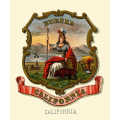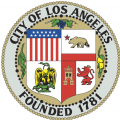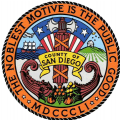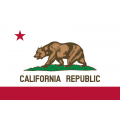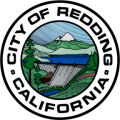For our 2024 rankings, the research team at Nursing Schools Almanac collected data on nearly 3,000 nursing schools and campuses throughout the United States. We evaluated each school on three dimensions:
California
We've organized a comprehensive list of California nursing schools. Below you'll find information on specific nursing programs such as LVN certificates and ADN, BSN, and MSN degrees. You'll also find a profile of nursing education and careers in each major California city.
California nursing programs and careers
City-specific information
Licensed vocational nurses care for the sick, injured, convalescent, and disabled under the supervision of registered nurses, surgeons, and physicians. They measure and record vital signs, dress wounds, prepare and give injections, collect samples for testing, and clean and monitor medical equipment. LVNs also gather information from patients for medical and insurance purposes, teach family members how to care for patients, and supervise junior healthcare staff such as certified nursing assistants (CNAs).
What does it take to become a registered nurse (RN), licensed vocational nurse (LVN), or certified nursing assistant (CNA) in the San Francisco Bay metropolitan area? Because RNs must perform a variety of challenging tasks – including administering treatments and medications, establishing care plans, and operating complex medical equipment – hospitals and healthcare providers require an associate degree in nursing (ADN), bachelor of science in nursing (BSN), or master of science in nursing (MSN). Many employers prefer a BSN or MSN degree.
San Diego County is home to one the nation’s largest populations of nursing professionals. Approximately 23,670 registered nurses (RNs) live in the area, as well as 8,320 certified nursing assistants (CNAs) and 5,170 licensed vocational nurses (LVNs). These skilled professionals work at a variety of top hospitals and healthcare centers, such as Tri-City Medical Center, San Diego Hospice & Palliative Care Center, Kindred Hospital, and Sharp Grossmont Hospital.
With a population of more than 250,000 registered nurses and hundreds of renowned nursing schools, California is one of the most promising places to start a nursing career, with Los Angeles leading the pack. While California nursing programs and career opportunities are plentiful, it still takes a lot of work and the right education to obtain a lucrative position in this competitive field.
For our 2024 rankings of direct entry MSN programs, the research team at Nursing Schools Almanac compiled an extensive database of student performance on the National Council Licensure Examination for Registered Nurses (NCLEX-RN). Aspiring registered nurses in the United States must pass this examination before they may commence practice. Thus, student performance on the NCLEX-RN exam provides an excellent benchmark for comparing the relative quality of prelicensure programs.
For our 2024 rankings of prelicensure BSN programs, the research team at Nursing Schools Almanac compiled an extensive database of student performance on the National Council Licensure Examination for Registered Nurses (NCLEX-RN). Aspiring registered nurses in the United States must pass this examination before they may commence practice. Thus, student performance on the NCLEX-RN exam provides an excellent benchmark for comparing the relative quality of bachelor’s degree programs.
One of the fastest routes to licensure as a registered nurse (RN) is an associate degree program. A traditional ADN curriculum requires two years of fulltime study and prepares graduates to sit for the National Council Licensure Examination for Registered Nurses (NCLEX-RN). Many of California’s approved ADN schools also offer an advanced placement option for licensed vocational nurses (LVNs), often called an LVN-to-RN bridge program. Indeed, several schools like Allan Hancock College and College of the Siskiyous offer only the LVN-to-RN track.
For our 2024 rankings, the research team at Nursing Schools Almanac collected data on nearly 3,000 nursing schools and campuses throughout the United States. We evaluated each school on three dimensions:
The path to a nursing career in California begins with the proper education and training at an accredited nursing school. California is home to the highest-paid nursing professionals in the country and requires licensing, registration and/or certification, and continuing education for all nursing career paths. The most common nursing career paths include registered nurse (RN), certified nursing assistant (CNA), and licensed vocational nurse (LVN).
The Redding, California, metropolitan area is home to 60 nurse practitioners (NPs), 1,740 registered nurses (RNs), 350 licensed vocational nurses (LVNs), and 550 certified nursing assistants (CNAs). Many of these nursing professionals earned their degree or certificate at a local college or university. Redding has several high-quality nursing schools, including Simpson University, Shasta College, and Institute of Technology (IOT). Collectively, these schools offer programs for a wide breadth of nursing career paths.



